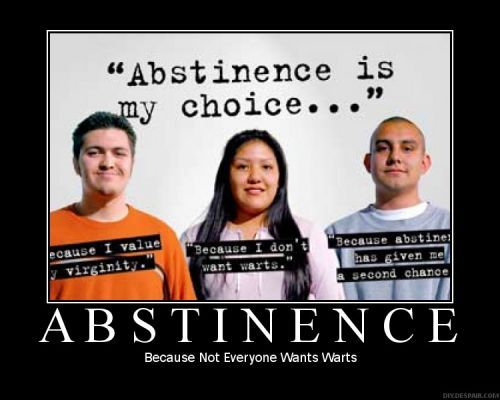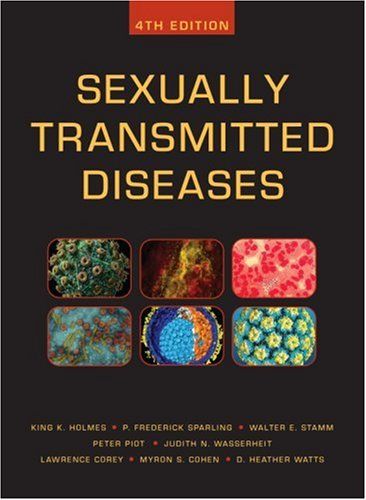 Back in March, we criticized some of the stories that came from a Centers for Disease Control and Prevention report that one in four teenage girls had a sexually transmitted disease. Many of the stories were thinly veiled advocacy pieces. They argued that this sad statistic was the result of a national policy of abstinence education.
Reporters had trouble, apparently, finding people who support abstinence education. Had they reported the story better, they might have discovered that there is no national policy of abstinence education. The federal government may throw significant money at abstinence education but they do so by providing grants. The abstinence message and materials are not uniform across the country or even in a given state. And places where a young person might receive abstinence education may also teach formal sex education. It's difficult to do a quality analysis of the effect on sex education or abstinence education. If you're going to turn a CDC report into advocacy journalism, you should know your limits.
Back in March, we criticized some of the stories that came from a Centers for Disease Control and Prevention report that one in four teenage girls had a sexually transmitted disease. Many of the stories were thinly veiled advocacy pieces. They argued that this sad statistic was the result of a national policy of abstinence education.
Reporters had trouble, apparently, finding people who support abstinence education. Had they reported the story better, they might have discovered that there is no national policy of abstinence education. The federal government may throw significant money at abstinence education but they do so by providing grants. The abstinence message and materials are not uniform across the country or even in a given state. And places where a young person might receive abstinence education may also teach formal sex education. It's difficult to do a quality analysis of the effect on sex education or abstinence education. If you're going to turn a CDC report into advocacy journalism, you should know your limits.
Well that was March. The theme of the stories is fully ensconced in the collective consciousness. Supposedly we all know now that abstinence education is ineffective and gives young women STDs.
This week the Washington Post ran a story that described abstinence education as "controversial" and sex education as "comprehensive." Just in case you didn't know which side you should be on. The article is about a campaign being launched by abstinence advocates:
Congress is debating whether to authorize about $190 million in federal funding for such programs, which have come under increasing criticism because of a series of reports that concluded they are ineffective. Such criticism has prompted at least 17 states to refuse federal funding for such programs.
Well, let's go back to that CDC study. The one that showed how ineffective abstinence education was. Not only was the advocacy theme ridiculous, so was the study! In an exhaustively reported piece for National Journal, Neil Munro shows that the study had serious shortcomings:
Rival Washington advocates pounced on the CDC's startling statistic. One faction, led by Planned Parenthood and other groups that get federal grants, said the number shows that the Bush administration's abstinence-promotion programs don't work and that funding should be transferred to sex-education and condom-distribution programs. The rival faction, led by social conservatives, said that the one-in-four number demonstrates the failure of condoms and sex-education classes. . . .
But how useful or valid is that one-in-four number? Are 25 percent of America's teenage girls really in imminent danger from HIV/AIDS, gonorrhea, and the human papilloma virus (HPV) that leads to cervical cancer?
A close examination of the CDC's star statistic reveals several serious shortcomings that undermine its validity, as well as its usefulness to parents, legislators, health officials, and advocacy groups on the left and the right.
For instance, the study referred to infections (most of which never turn into diseases) but the media claimed 25 percent of teenage girls had diseases. The study actually included both girls as young as 13 and women as old as 19. Most strikingly to me, the number was culled from a database with only 600 females under the age of 20! Relevant to the policy discussions, Munro notes that the CDC's news conference and materials didn't put the numbers into context. Had they, the data would have shown that infection rates for the most serious diseases, including syphilis, gonorrhea and chancroid, are sharply below 1990 levels. And teenagers' expoure to STDs had dropped because their sexual activity had declined 20 percent among girls and 40 percent among boys, according to a 2006 report.
 The National Journal article is also telling for how the media just uncritically reported the CDC's own spin:
The National Journal article is also telling for how the media just uncritically reported the CDC's own spin:
CDC officials, including [John Douglas, director of the CDC's STD prevention division], announced the number in Chicago at the CDC's biannual National STD Prevention Conference, which is attended by many experts, state officials, and reporters. The subsequent media reports and editorials generally echoed the recommendations of CDC officials, and their advocacy allies, for greater government-funded testing and intervention.
For example, the second paragraph of the 8:51 p.m. version of the March 11 AP article said, "Some doctors said the [infection] numbers might be a reflection of both abstinence-only sex education and teens' own sense of invulnerability." The AP article also quoted Planned Parenthood's Richards as saying that "the national policy of abstinence-only programs is a $1.5 billion failure, and teenage girls are paying the real price." Neither that dispatch nor The New York Times quoted advocates of abstinence-only programs.
The one-in-four figure immediately became fodder in the ongoing debate over whether the government should support comprehensive sex education or fund advocacy for sexual abstinence until marriage. Sex-education advocates were first out of the gate, announcing even before the press conference (in time for initial news reports) that funding should be transferred from "failed" abstinence-only programs to education that includes lessons on the use of contraceptives.
Proponents for abstinence and marriage programs countered that the CDC's number demonstrates just the opposite. "The half [of the adolescents] that weren't having sex did not have STIs," said the Family Research Council's Gaul. The CDC's one-in-four number "represents a failure of contraceptive-based education," Rep. Mark Souder, R-Ind., said at the Waxman hearing.
Munro shows that the CDC's report won't settle the debate because the study didn't compare infection rates for teens in abstinence programs with other teens. He reports that the data's complexity and small sample size mean that its relative standard error was greater than 30 percent. He shows that the CDC used the study to push for increased funding. And so on and so forth.
It is depressing beyond belief that of all the reporters who covered this story, only Munro was skeptical enough to dig into the dramatic subtexts at play here and expose the fraud. And who wants to bet that despite Munro's tremendous reporting, we'll still see reporters parrot this unreliable statistic and draw policy conclusions from it?
